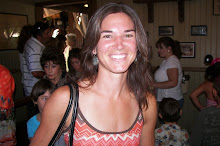Simply put, commercial baby formula is heavily processed, is difficult to digest, contains synthetic vitamins and minerals in proportions outside of nature's, and lacks vital nutrients found in breast milk. This is not an acceptable substitute. The following is a recipe (you can find it on the Weston A. Price Foundation website) for formula made from raw milk. Some might question why there is no added iron for this recipe (there is already a small amount of iron in raw milk). The answer is that mother's milk is naturally low in iron. The body knows that iron competes with zinc, which is used for neurological development. Too much iron, for a child under 6 years old, leads to imbalances and eventually, toxicity.
MILK-BASED FORMULA
Makes 36 ounces
This milk-based formula takes into account the fact that human milk is richer in whey, lactose, vitamin C, niacin, and long-chain polyunsaturated fatty acids compared to cow’s milk but leaner in casein (milk protein). The addition of gelatin to cow’s milk formula will make it more digestible for the infant. Use only truly expeller-expressed oils in the formula recipes, otherwise they may lack vitamin E.
The ideal milk for baby, if he cannot be breastfed, is clean, whole raw milk from old-fashioned cows, certified free of disease, that feed on green pasture. For sources of good quality milk, see www.realmilk.com or contact a local chapter of the Weston A. Price Foundation.
If the only choice available to you is commercial milk, choose whole milk, preferably organic and unhomogenized, and culture it with a piima or kefir culture to restore enzymes (available from G.E.M. Cultures 707-964-2922).
2 cups whole milk, preferably unprocessed milk from pasture-fed cows
1/4 cup homemade liquid whey (See article on lacto-fermentation for recipe)
4 tablespoons lactose*
1/4 teaspoon bifidobacterium infantis**
2 or more tablespoons good quality cream (not ultrapasteurized), more if you are using milk from Holstein cows
1 teaspoon regular dose cod liver oil or 1/2 teaspoon high-vitamin cod liver oil*
1 teaspoon expeller-expressed sunflower oil*
1 teaspoon extra virgin olive oil*
2 teaspoons coconut oil*
2 teaspoons Frontier brand nutritional yeast flakes*
2 teaspoons gelatin*
1 7/8 cups filtered water
1/4 teaspoon acerola powder*
*Available from Radiant Life (888) 593-8333
**Available from Natren (800) 992-3323 or Radiant Life (888) 593-8333.
Add gelatin to water and heat gently until gelatin is dissolved. Place all ingredients in a very clean glass or stainless steel container and mix well. To serve, pour 6 to 8 ounces into a very clean glass bottle*, attach nipple and set in a pan of simmering water. Heat until warm but not hot to the touch, shake bottle well and feed baby. (Never, never heat formula in a microwave oven!) Note: If you are using the Lact-Aid, mix all ingredients well in a blender.






